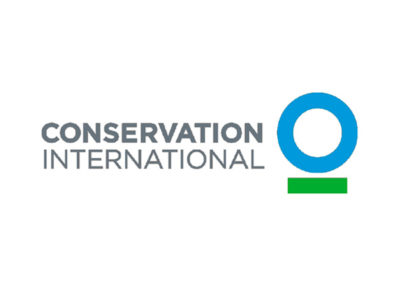<p><em>Editor’s note: News about conservation and the environment is made every day, but some of it can fly under the radar. In a recurring feature, Conservation News shares a recent news story that you should know about.</em></p>
<p>The Arctic tundra is defined by its lack of trees. In fact, the word tundra is derived from the Finnish “tunturia,” meaning a treeless plain. But a recent study conducted in Alaska shows that white spruce trees are creeping northward into
this barren terrain and taking root in areas where frigid temperatures have long prevented them from growing, <a href="https://twitter.com/mrMattSimon" target="_blank">Matt Simon</a> reported for <a href="https://www.wired.com/story/these-trees-are-spreading-north-in-alaska-thats-not-good" target="_blank">Wired</a>. The culprit? You guessed it: climate change.</p>
<p>White spruce trees are commonly found throughout the boreal forest of North America — an area spanning from Alaska to Newfoundland. That region is populated by huge forests of pines, spruce and fir that are adapted to its short growing seasons and
cold conditions. Still, that environment is nothing compared to life at the very top of the world. The Arctic tundra is among the most inhospitable places on Earth — a frozen and forbidding desert-like landscape, with temperatures reaching well
below zero degrees Celsius for 10 months of the year. Only hardy, specially adapted vegetation like mosses, sedges and lichens could survive there — until now.</p>
<p>“When you see trees growing, you know that the climate has really shifted,” said Roman Dial, an ecologist who conducted the study. While exploring in Alaska, he and his team discovered an Arctic savanna of white spruce trees where they shouldn’t
be: “They’re just going gangbusters out there in the Arctic tundra and alpine tundra. They’re way ahead. They’re even doing better than the shrubs.”</p>
<p>The invasion of conifers is a sign that this landscape is changing fast, with huge implications for life on Earth. Historically, cold conditions have kept the ground in the Arctic permanently frozen. Trapped beneath all that frozen soil — called
permafrost — are layers of dead, organic matter (think frozen mammoths and such) that have stacked up over centuries. In total, this glacial boneyard accounts for <a href="https://www.nature.com/articles/d41586-021-00659-y" target="_blank">1,600 billion tons of carbon</a>,
more than twice the amount in the atmosphere today. As global warming thaws the permafrost, all that carbon could be uncovered and released, further accelerating climate breakdown.</p>
<p>And as more trees march northward, they are further contributing to <a href="https://www.pnas.org/doi/10.1073/pnas.1918770116#sec-1" target="_blank">a feedback loop</a> that is causing the Arctic to warm <a href="https://www.wired.com/story/why-the-arctic-is-warming-4-times-as-fast-as-the-rest-of-earth/" target="_blank">more than four times faster</a> than the rest of the planet. This is because light-colored environments, like snow and sea ice, are much better at <a href="https://climate.nasa.gov/ask-nasa-climate/2594/sun-and-sky-snow-and-ice/" target="_blank">reflecting the sun’s radiation</a> than dark-colored areas like open waters and tree cover, which absorb more heat. In essence, more trees means a faster melting tundra which, in turn, means more severe
climate impacts — and onward, in a vicious cycle.</p>
<p>As these ecological barriers fall in the far north, the boreal forests where white spruce are normally found are also changing. A Conservation International <a href="https://www.conservation.org/blog/study-climate-breakdown-is-moving-the-farming-frontier">study</a> suggests that climate change is pushing the agricultural frontier into new, northerly regions, making it
possible in the near future to grow certain crops in places that were once inhospitable to them. Lee Hannah, a scientist at Conservation International and the study’s lead author, says this could be a big problem.</p>
<hr />
<ul>
<li><strong>Further reading:</strong> <a href="https://www.conservation.org/blog/study-climate-breakdown-is-moving-the-farming-frontier">Study: Climate breakdown is moving the farming frontier</a></li>
</ul>
<hr />
<p>“This is the beginning of a redistribution of the entire planet’s ecosystems — a process that could upend the delicate ecological relationships we all rely upon to survive,” Hannah <a href="https://www.weforum.org/agenda/2022/03/high-tech-maps-biodiversity" target="_blank">wrote</a>. “Boreal areas in Russia and Canada are going to be increasingly suitable for agriculture this century and, while that has big food production potential, it also has serious environmental consequences.”</p>
<p>Many of these rapidly changing landscapes are also among the most vital on Earth — places we need intact in order to protect biodiversity and curb climate change, Hannah added. And as big changes continue to transform ecosystems, scientists are
increasingly looking to the small details — like trees showing up where they’re not supposed to — to gauge nature’s health and its continued ability to provide for us all.</p>
<p>Read the full story <a href="https://www.wired.com/story/these-trees-are-spreading-north-in-alaska-thats-not-good" target="_blank">here</a>.</p>
<p><em>Will McCarry is the staff writer at Conservation International. Want to read more stories like this? <a href="https://www.conservation.org/act/subscribe">Sign up for email updates</a>. Also, <a href="https://www.conservation.org/act">please consider supporting our critical work</a>.</em></p>
<p><em>Cover image: Aleutian Islands, Alaska (© Chris Burkard)</em></p>



